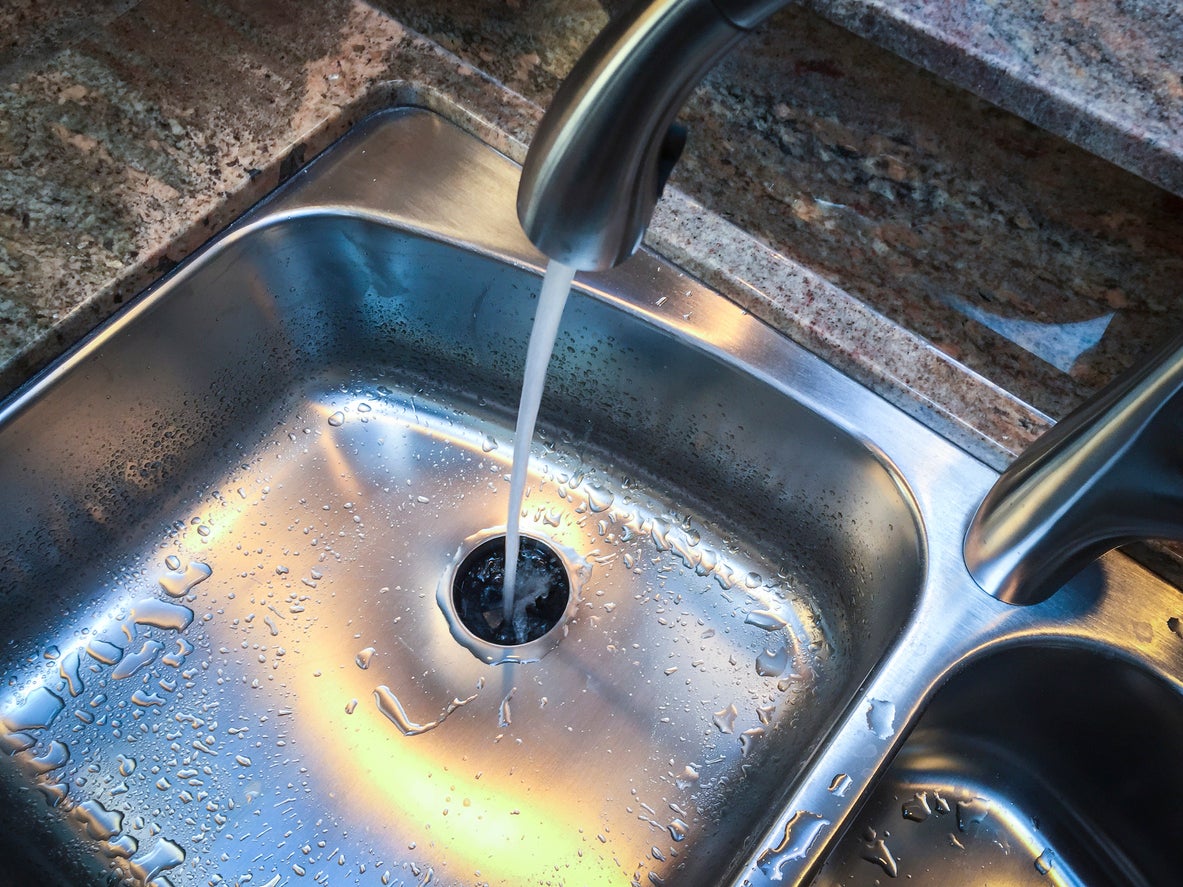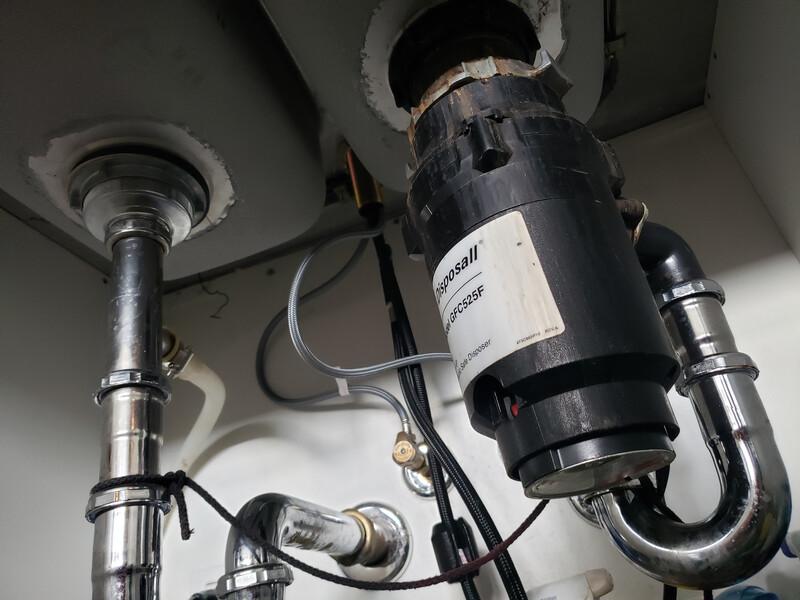Simple Instructions for Repairing a Leaky Waste Disposal
Simple Instructions for Repairing a Leaky Waste Disposal
Blog Article
The article below relating to Garbage Disposal Leaking From Bottom is particularly motivating. Read it for yourself and see what you think of it.

Waste disposal unit are crucial kitchen area home appliances that aid in taking care of food waste successfully. Nonetheless, a leaking waste disposal unit can be an irritating and untidy trouble to deal with. Fortunately, several leakages can be dealt with easily with a few basic steps. In this post, we will review how to fix a leaking waste disposal unit properly.
Introduction
Waste disposal unit are installed under kitchen area sinks and are made to shred food waste into smaller items, allowing it to pass through the pipes system conveniently. While these gadgets are usually reputable, leaks can occur over time because of wear and tear, loosened connections, or damages to the system.
Step-by-Step Guide to Taking Care Of a Dripping Garbage Disposal
Turn Off the Power
Prior to trying any type of fixings, make sure that the power to the waste disposal unit system is turned off to avoid the danger of electric shock.
Situate the Leakage
Recognize the specific place of the leak and figure out the reason
Tighten Links
Make use of a wrench to tighten any type of loose connections between the disposal unit and the pipes system.
Replace Seals or Gaskets
If the leakage is due to worn seals or gaskets, eliminate the old components and change them with new ones.
Patching Fractures or Openings
For cracks or holes in the disposal device, use epoxy or an appropriate patching material to seal the broken location.
Identifying the Source of the Leakage
Before attempting to take care of a dripping garbage disposal, it is essential to determine the resource of the leakage. This can typically be done through aesthetic inspection or by carrying out easy tests.
Visual Examination
Check the garbage disposal system very carefully for any indications of water leakage. Pay very close attention to locations around seals, gaskets, and connection points.
Testing for Leakages
One means to check for leaks is by running water with the disposal device and looking for any type of noticeable indicators of leakage.
Usual Root Causes Of Leakages in Waste Disposals
Worn Seals and Gaskets
Seals and gaskets play a vital function in stopping water from leaking out of the garbage disposal. Gradually, these parts can wear away, causing leaks around the disposal device.
Loose Links
The links in between the garbage disposal and the plumbing system can end up being loosened gradually, causing water to leakage out during operation.
Cracks or Holes in the Disposal System
Physical damages to the waste disposal unit, such as fractures or holes in the housing, can likewise cause leakages.
Tools and Products Needed for Repairing a Dripping Garbage Disposal
Prior to starting the repair work procedure, gather the required devices and materials, consisting of a screwdriver, adjustable wrench, plumbing professional's putty, substitute seals or gaskets, and epoxy or patching material for repairing splits or holes.
Examining the Garbage Disposal After Repair Work
As soon as the repair work is full, evaluate the garbage disposal by running water with it to ensure that the leakage has actually been settled.
Preventive Upkeep Tips to Avoid Future Leaks
To prevent future leakages, it is essential to carry out normal maintenance on your garbage disposal. This consists of keeping it clean, preventing putting non-food things or tough items down the disposal, and periodically looking for leaks or other concerns.
Final thought
Finally, taking care of a dripping garbage disposal is a reasonably uncomplicated process that can be finished with standard tools and materials. By adhering to the steps described in this post and exercising preventive maintenance, you can keep your garbage disposal in good working condition and avoid costly repair services in the future.
What to Do About a Leaking Garbage Disposal
A leaking garbage disposal often goes unnoticed until you confront a sopping cabinet, a foul-smelling puddle, or an audible drip-drip-drip from the unit. The fix can be frustrating, too, because the leak can stem from a number of components in the system. Fortunately, with a little sleuthing, you can zero in on the leak and—depending on the exact location—stop the icky oozing and repair the component that caused it. Worst case scenario, if it turns out that the garbage disposal must be replaced, installing a new one is a reasonable do-it-yourself task for those with basic plumbing skills. Read on to keep the cash you’d otherwise hand over to a pro.
Prepare to find the leak
Prior to testing the garbage disposal for leaks, unplug it at the wall outlet and turn off the power from the breaker box to prevent electrical shock. Then insert a watertight sink stopper into your sink drain and wipe the unit dry with a clean cloth. In any handy container, mix a few drops of food coloring into a few cups of water, and pour the dyed water onto the sink stopper to help you locate the leak.
Investigate the source
the top, where the disposal meets the sink drain the side, where the dishwasher hose or main drain pipe connects to the disposal or the bottom of the unit Inspect each of these locations while gliding a light-colored rag over the unit; the dyed water will readily show on the rag and reveal the location of the leak. If a leak isn’t immediately apparent, remove the sink stopper and pour a few more cups of dyed water down the sink drain, then check for leaks again. Leaks near the top of the unit are more likely to show themselves while the sink is plugged, while side and bottom leaks are more noticeable while the sink is unplugged.
The metal sink flange that sits directly inside the sink drain is typically sealed around the top with plumber’s putty (a clay-like sealant) and then secured from under the sink with bolts. If the plumber’s putty deteriorates, or the bolts loosen, the flange can no longer form a watertight seal between the sink drain and the disposal—which could cause a leak at the top of the unit.
To reseal the leaky flange, you must first detach the garbage disposal. Start by loosening the screws securing the main drain pipe to the disposal, then loosen the screws in the metal clamp securing the dishwasher hose to the disposal and detach the drain pipe and dishwasher hose from the disposal. Loosen the screws in the mounting ring that connects the disposal to the metal mounting assembly beneath the sink, then pull down the disposal and carefully set it on a clean, dry surface. Loosen the bolts in the mounting assembly with a wrench, then pull down the mounting assembly and set it near the disposal.

We hope you liked our part about Why Is My Garbage Disposal Leaking From the Bottom?. Thank you so much for taking time to browse our blog post. Sharing is good. One never knows, you may very well be doing someone a favor. Bless you for your time. Please come visit our website back soon.
Schedule An Appointment Report this page